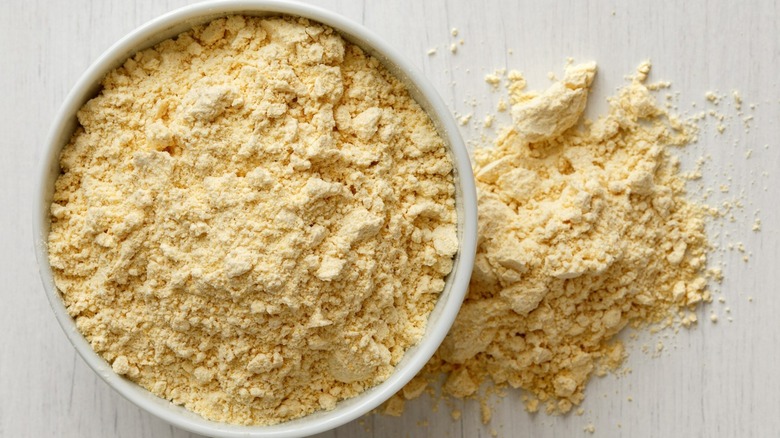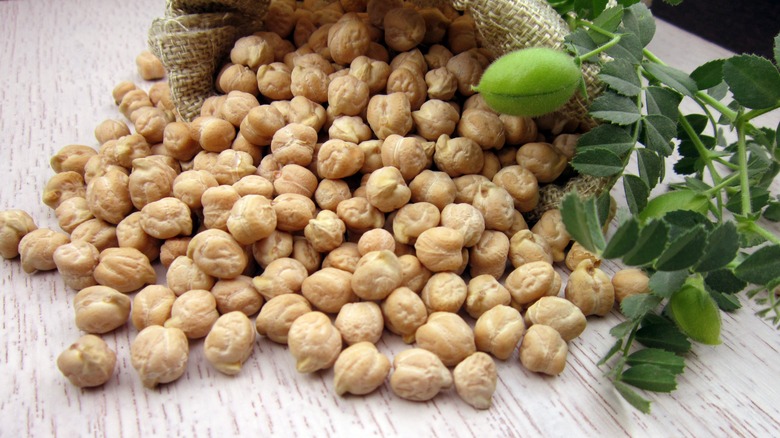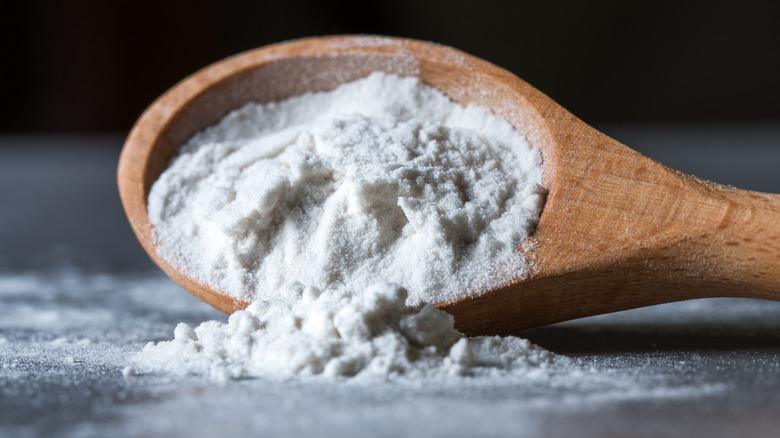Chickpea Vs Arrowroot Powder: How Do The Vegan Egg Substitutes Differ?
Chickpea powder and arrowroot powder are just two of many popular egg substitutes used in vegan and vegetarian cuisine. With distinct textures and tastes, chickpea powder and arrowroot powder serve different purposes. Though the choice is up to you, it's important to note the differences between them. While chickpea powder provides structure to dishes such as meatloaf and pancakes, arrowroot powder is better suited for cakes and biscuits.
To replace one egg yolk, you'll need one tablespoon of chickpea powder, an equal amount of all-purpose flour, one teaspoon of canola oil, and one-fourth cup of water. Chickpea powder is so effective that during the COVID-19 lockdown, enterprising entrepreneur Grace O'Brien created Peggs, a convenient prepackaged chickpea-based egg substitute.
Ready-to-use arrowroot powder is also available both online and in stores. If you choose to use arrowroot powder as an egg replacement, you'll need to combine two tablespoons with three tablespoons of water.
The benefits of chickpeas
Produced in more than 50 countries, chickpeas, also called garbanzo beans, appear in historical texts from as early as 3500 BCE. Like kidney beans and peanuts, they are considered legumes. Flour made from chickpeas can be described as nutty, earthy, and bitter — flavors that are certainly not for everyone. However, keeping chickpea flour properly hydrated can improve its taste. Its powdery texture is similar to all-purpose flour, so it's a good choice for breads and savory dishes. Chickpea powder is also known for its binding properties.
Chickpea flour has many nutritional benefits. Its high fiber content can reduce cholesterol in adults, and it's a good deterrent for heart disease, among other conditions. Great for those with dietary restrictions, Chickpea flour is naturally gluten-free.
Aquafaba, the liquid from canned or home-cooked chickpeas, also has many uses. It imparts little flavor and is a great binder. For the best results, whip it until it becomes foamy.
Why arrowroot powder may be a good choice
Native to South America, arrowroot powder was likely used by the Arawak tribe to heal arrow wounds. Unlike chickpea flour, arrowroot flour has a neutral taste, so it's useful for bringing out the actual flavors of your dish. Its intricate texture imparts baked goods with lightness and taste while also functioning as a thickening agent and binder. As well as an egg replacement, arrowroot flour can replace wheat flour and cornstarch. Its consistency makes it a better choice than chickpea flour for cakes and other desserts.
With its high starch content, arrowroot flour helps fight diarrhea and rehydrate the body after a serious bout. Its starchiness also acts as an appetite suppressant and immune system booster. Like chickpeas, it's gluten-free. However, it contains fewer calories and carbohydrates.
Ultimately, if you're baking a casserole or other heavy food, chickpea powder may be best. However, if you're whipping up cupcakes or cookies, the best choice is probably arrowroot powder.


